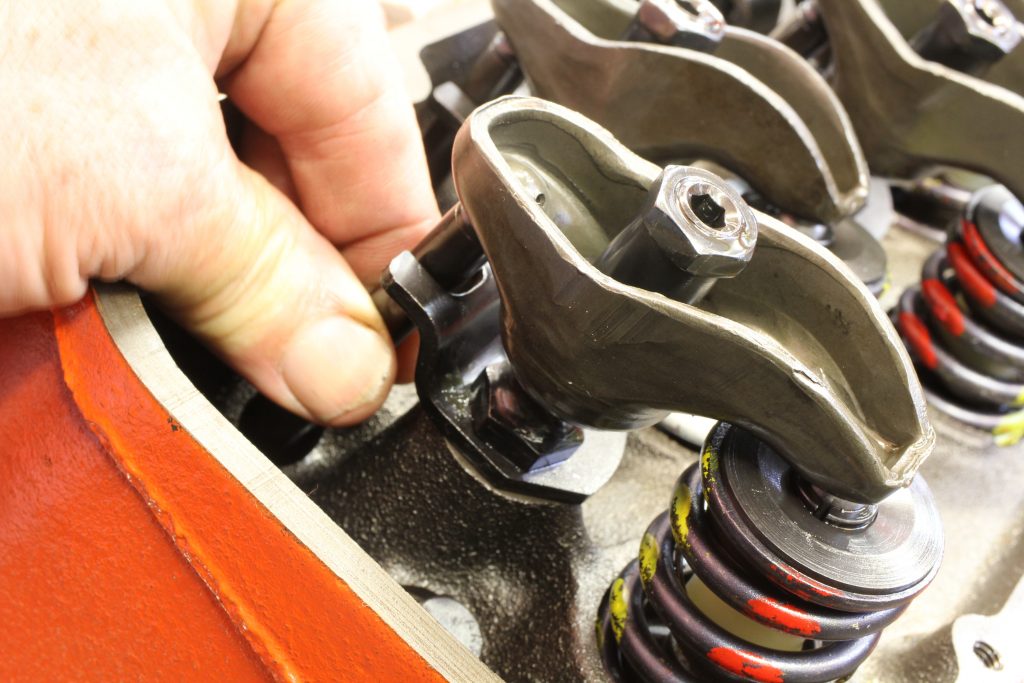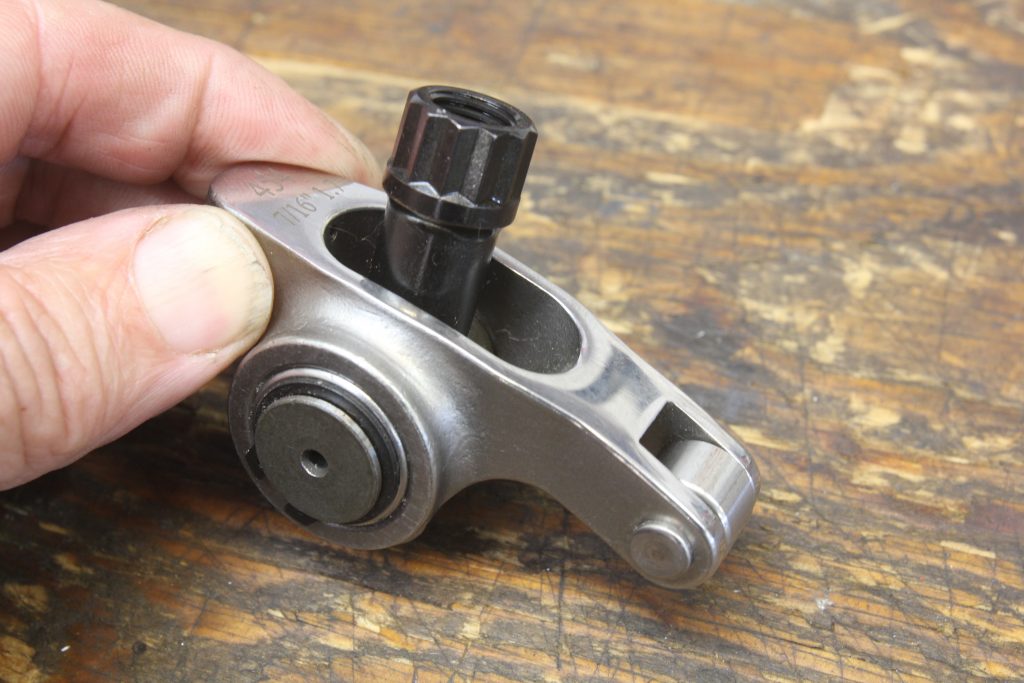
I just discovered a rocker arm on my small block that loosened up and popped off the stud. It kinda mangled the threads on the stud, so I’m going to replace the stud, poly lock and the rocker just to be safe. I think I may not be applying enough torque on that Allen lock nut, but I’m afraid it will just strip the inside of the Allen lock nut if I lean on it. Is there a trick to getting this tight enough?
S.B.
Yes. The poly lock nut for roller rocker arms is a great little invention. I learned the little secret to locking these nuts tightly from an engine builder probably 40-odd years ago and the technique is simple and works extremely well.
The poly lock nut is merely a threaded nut with a small Allen screw placed inside the female threads. With the large adjuster positioned to set the lash or lifter preload, then the Allen nut can be tightened. But sometimes the Allen won’t tighten against the top of the stud tight enough and the large adjuster can then work its way loose—as you’ve discovered.
The technique is to set the large adjuster nut to just shy of the final position of the poly lock. With the large nut in this position, tighten the Allen wrench to contact the end of the stud. Then tighten the large poly lock nut the last 1/16th of a turn or so. This places more load on the locking Allen plug than can be accomplished with the Allen wrench alone.
This does require some practice to get the setting correct, especially when setting lash on a mechanical lifter engine since you’re working to within 0.001-inch. This requires a technique where you can estimate the amount of change that last 1/16-turn will affect the actual lash. It can be frustrating but with some experimentation, you can come up with a technique that will produce the desired lash.
One other little tip we’ve learned is that ARP makes a great adjust nut called a Perma-Loc with a simple yet very helpful addition. All other poly locks use a six-point hex that allows a box end wrench to fall past the hex, requiring you to hold the wrench in position on the hex. The ARP Perma-Lock uses a 12-point nut with a shouldered ledge on the bottom of the points that prevents the box end wrench from falling past the hex. Plus, the Allen set screw is machined flush on the bottom so it offers full optimal contact—as opposed to other adjusters that use a tapered face. This might seem like a small thing, but once you’ve used the ARP Perma-Locs you will more fully appreciate these features.


Another thing to consider is whether you are using factory rocker studs or not. Factory rocker studs were not designed for a set screw to contact them and don’t have a flat top surface, so the Allen may not be getting full contact either. ARP makes studs with a flat surface.
How about correctly identifying the engine in the photo, It’s obviously not a SB Chevy. It’s a BB.
Hey, thanks for the heads up–we’ve made the adjustment.
On All Cylinders Team,
I have been fighting with my SBC 406, has a roller solid lifter cam and 1.5 rockers. After a few pass’s on a rally course, I have been finding the engine encounter a misfire. Removing the covers and finding several poly locks loose, then with further inspection finding them broken in half? Not sure if Im putting too much elbo into adjusting the lash. Im setting lash on the rockers warm, adjusting the lash with the lock, then while holding the nut tightening the Allen. There have been a few cylinders that make a snapping sound while locking down the allen? Am I putting to much tourque on the allen lock if Im hearing then snap?
Hey Randy, Click here to contact the Summit Racing tech folks. They’ll work through that valvetrain issue with you and can help recommend a good solution.
I have a question
I have a Gen V big block chevy with AFR 335 heads ….. Has anyone ever modified a big block chevy head gasket to allow more coolant flow.. they have two variations on head gaskets one with two larger ports on ends without the three small holes down on the bottom between cylinders fel pro 8180PT2 and ones without the two larger ports and has three small holes down on the bottom between cylinders fel pro number 8523PT1 and What should I use so the engine will not over heat? Do i use the recommended for the engine which are the (8523PT1) or should I use the the other ones (8180PT2) which have larger holes for coolant flow?